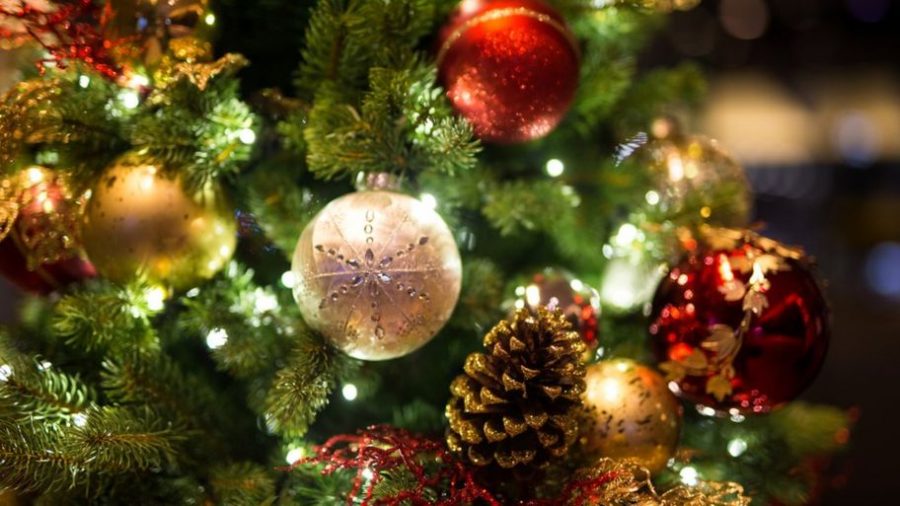By Jonathan Starling
Bing Crosby may have famously sung about a white Christmas, however for Bermuda we’re unlikely to ever see such a phenomenon. Ours is a green Christmas – however, how many of us go a step further and aim for a “green” Christmas in the sense of environmental sustainability?
There are many options that the environmentally conscious can chose to aim for a greener Christmas, such as focusing on experiential gifts rather than wanton consumerism with packaging and pretty paper; focusing on recycled wrapping – even newspaper (pro-tip, use this article for bonus points!) – or reusable gift bags, or even giving two gifts in one, such as using clothing (scarves?) as wrapping instead!
And of course, you can give a gift back to the Earth and give green gifts like a composter, a donation to an environmental charity. Or focus on recycled or upcycled gifts, energy saving technology (just think save money and it’s the gift that keeps on giving throughout the year!), homemade gifts, gifts to support outdoor activities or growable gifts such as seedlings or trees.
And on that last note, have you considered the environmental impact of your Christmas tree and what is the most environmentally friendly option?
From a “green” perspective the best option is to get a living Christmas tree. That is, quite frankly, a live tree, in a container, that will grow and thrive in Bermuda which you can plant out after Christmas. In Bermuda we’re quite lucky that the endemic Bermuda Cedar resembles, in its juvenile stage, a traditional Christmas tree. It may not be quite as large as a traditional Christmas tree, however it makes up for it by not leaving needles all over the floor (less clean-up, score!); enhances biodiversity (it’s berries provide food for many native and endemic species); aids in carbon sequestration (helps offset your carbon footprint); protects the soil; drought resistant; and hurricane resistant.
It can also be part of a family tradition – planting a “Christmas” forest over time, as a family. Of course, not everyone has the land to plant a tree in. That’s okay. Reach out to schools, the Bermuda Audubon Society or the Bermuda National Trust and see if they might welcome such trees and later the whole family can go and picnic at such a Christmas forest.
Of course, you don’t have to go for a Cedar or even a tree resembling a traditional Christmas tree. Why not go for a palmetto, an olivewood, a bay grape, a pomegranate or a citrus?
Still want a traditional tree and you’re wondering if you should get a real tree or an artificial one, and wondering which is the greener option?
Good question.
If you already have an artificial tree, use it. You already have it, so keep using it. The carbon footprint of artificial trees reduces the longer they’re used. So, keep at it.
Now it’s an interesting question whether to buy an artificial tree or a cut tree. It’s not clear cut. Yes, the artificial one is likely made of plastic, however it’s not single-use and you can use it for decades. The real tree looks bad – it’s a tree that’s been cut down, and then there’s the carbon footprint of transporting it here. Surely we want to keep trees growing rather than cutting them down, right? Well, yes and no.
Christmas tree plantations can provide habitats for other plants and animals if managed properly, which can be a good thing for ecological resilience. And trees tend to sequester carbon (that is, absorb carbon from the air and “lock” it into the soil and the tree itself) at greater rates when young (so from growing until harvesting). And the carbon can be returned to the Earth through composting, or if used in the incinerator, offsets the importation of fossil fuels for power generation in Bermuda.
In general, with all things being equal in terms of transport carbon footprint (both artificial trees and real trees available in Bermuda come from the US northeast and Canada), the available literature on carbon footprint seems to indicate that an artificial tree has a lower carbon footprint if used consistently for at least nine years versus an annual real tree purchase. This of course doesn’t consider the biodiversity impact.
My own personal leaning based on the literature and factoring in biodiversity, would be that an annual real tree is the greener option. Additionally, some charities benefit from selling Christmas trees, so if you do decide on the real tree route, support a charity in doing so.
However, due to the carbon footprint of importing to Bermuda (including transport from harvesting or manufacturing, then from port to port), neither option is ideal from a ‘green’ perspective.
The gold standard really is a living tree that you can plant after.
Transport costs are minimized, it enhances our island in terms of biodiversity, hurricane resistance (if using a cedar) and keeps on giving throughout its life time, as well as sequestering carbon. Perhaps this could be a national drive going forward, with annual ‘Christmas forests’ being planted (in national parks and elsewhere) – and charities can benefit from this too by selling living cedars instead of imported pine trees. It’s a win-win for all.
What do you think?

